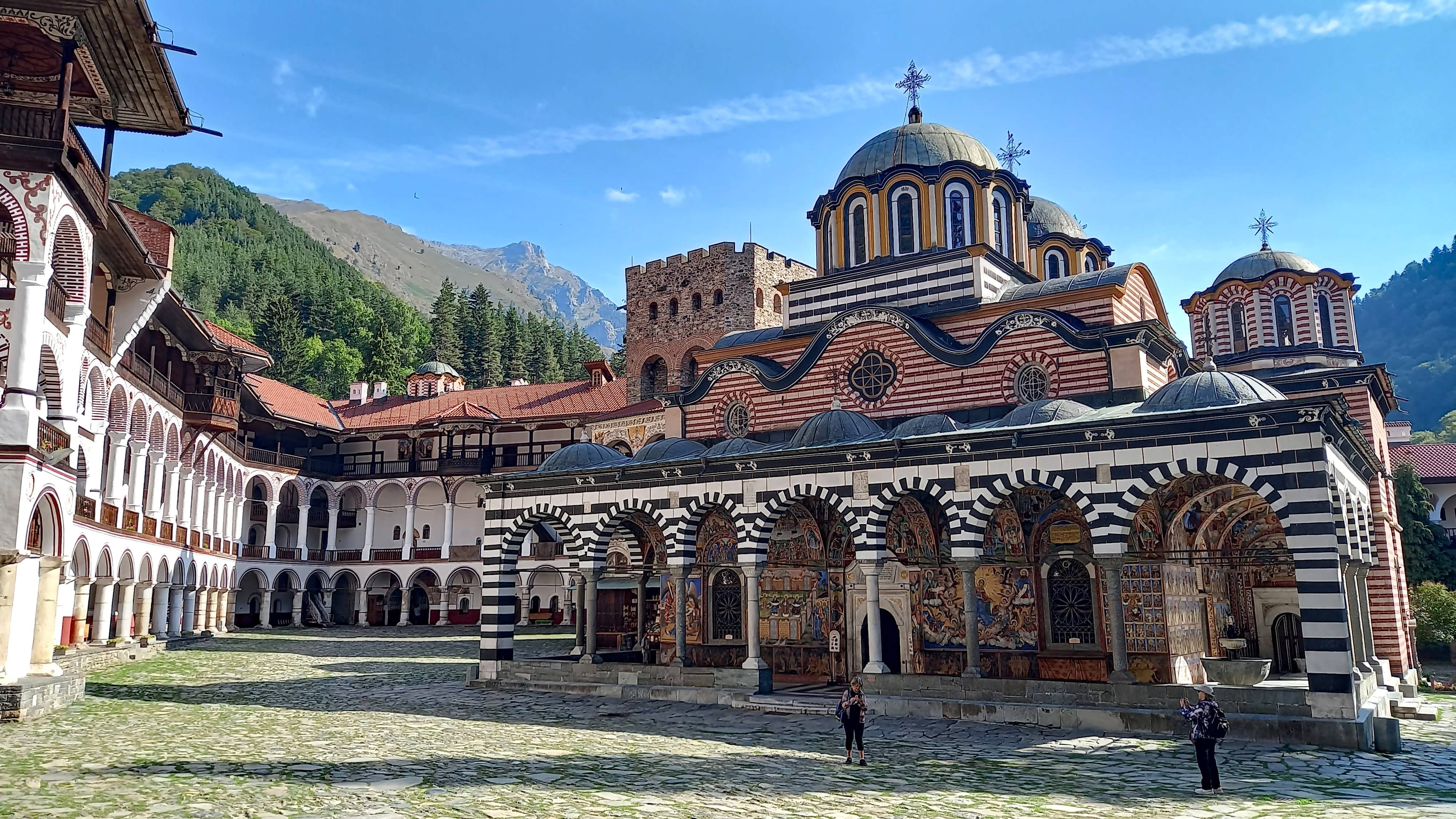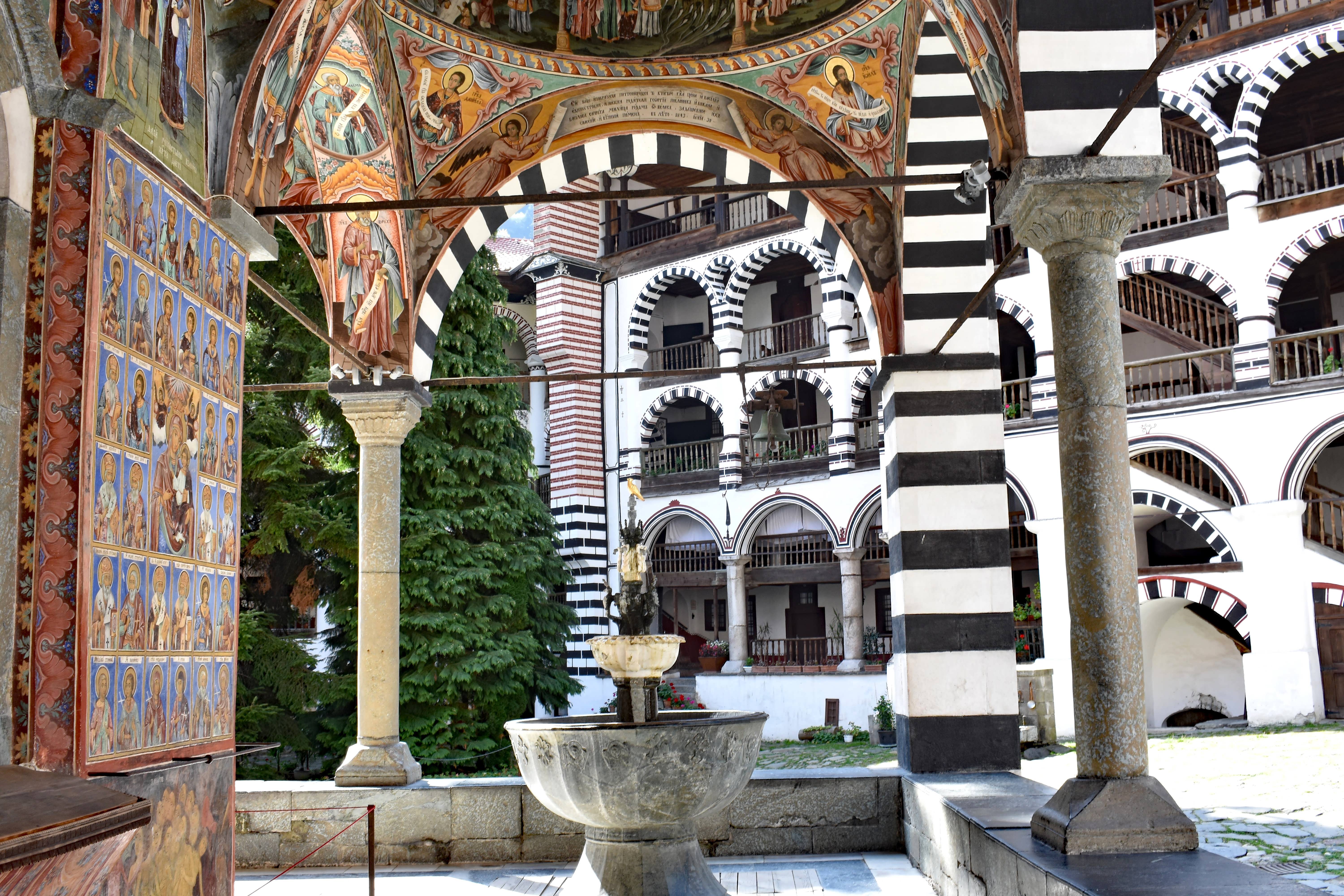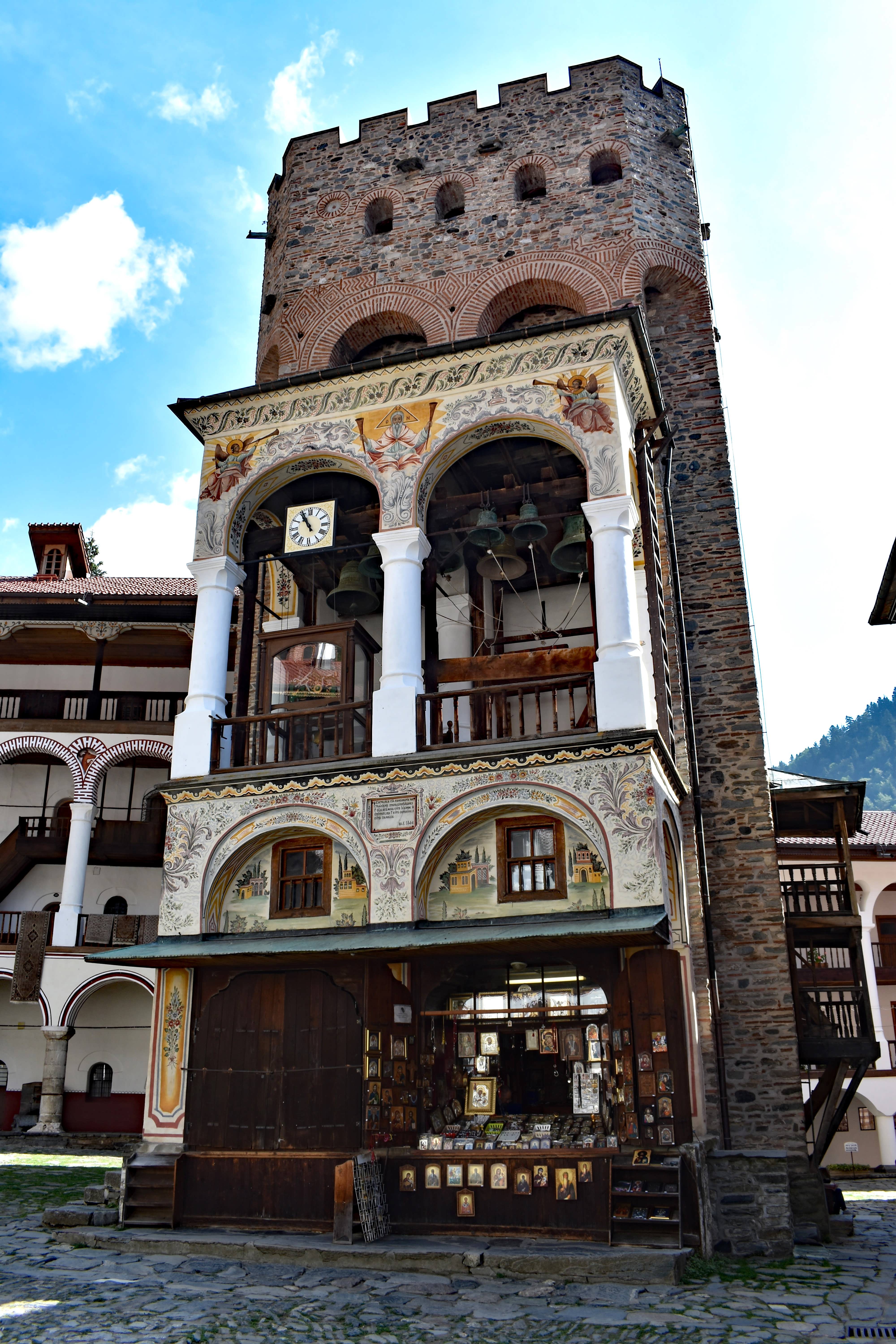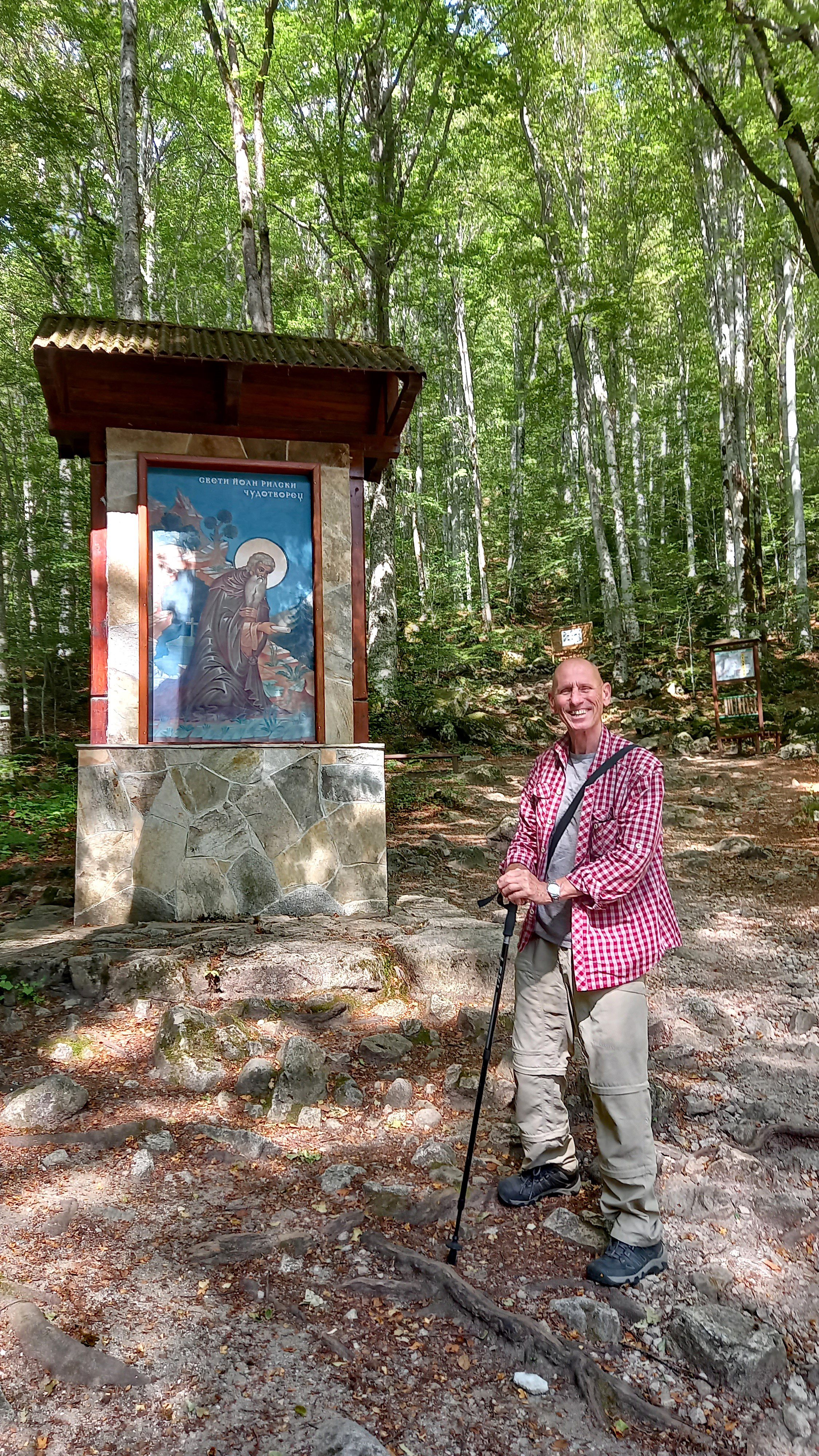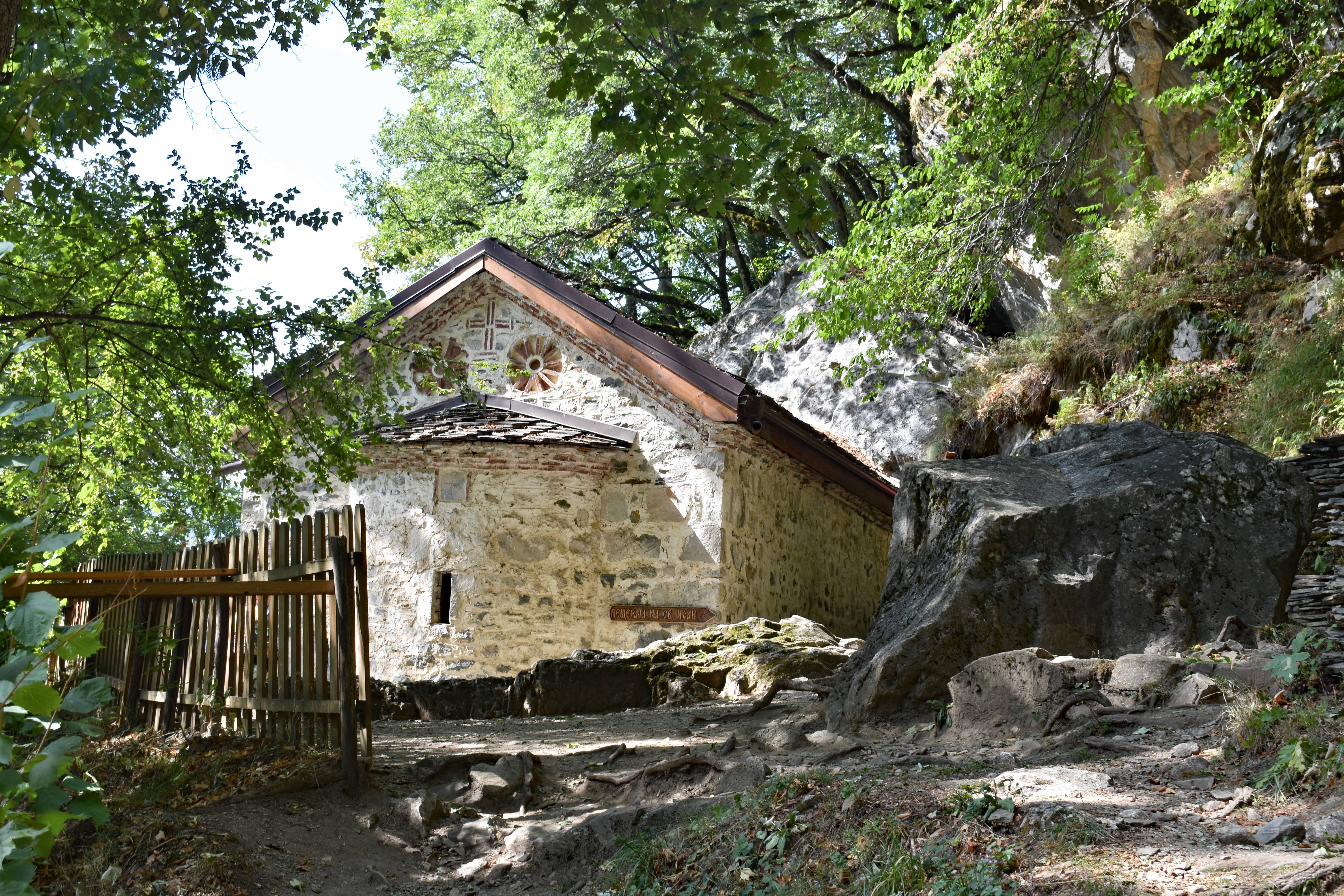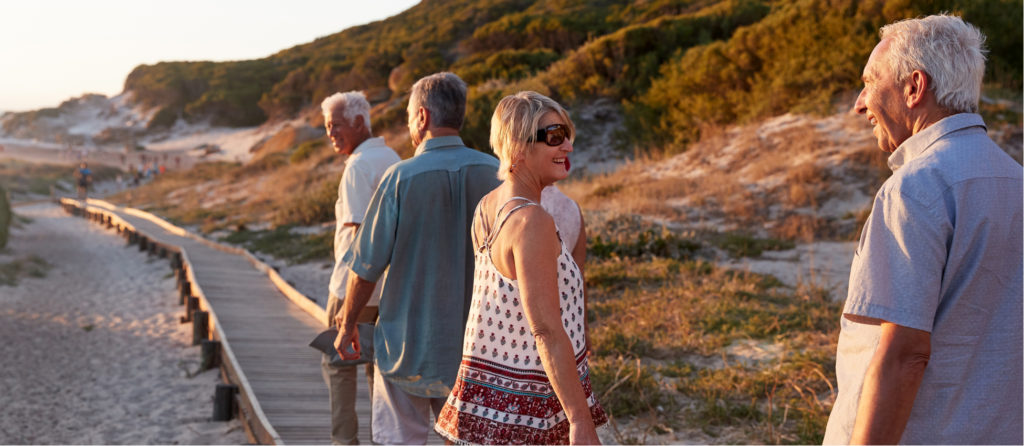My first glimpse of Rila Monastery, said to be Bulgaria’s spiritual centre, was unforgettable: not only is it located in a thickly forested gorge surrounded by mountains it also resembled a beautifully painted castle or fortress. The 80 monks who live here are fortunate to reside in such a stunning building.
We were on a self-guided tour, a first for us, and it was at places like this, I missed having an expert to bring the place to life as we only had our guide book to rely on.
At 10.15am, it was still relatively quiet, and we walked around the outside before venturing into the main church which was full of gold with the large round hanging chandelier or horos being particularly impressive. Icons abounded but unfortunately photographs were not allowed.
There were three museums which I’d looked up on the monastery’s official website in advance, noting significant discounts for pensioners.
At the Icon Gallery, 3 Lev and 2 for students and pensioners, the ticket had gone up to 8 Lev with an elderly lady telling me that discounts only applied to Bulgarian pensioners.
Climbing the five floors of the 23m stone Hrelov Tower, the oldest preserved building in the Monastery, was according to the website 5 Lev with a pensioner rate of 2. A young girl again told me that there were no discounts, and as she spoke good English, I showed her the website on my phone which said, ‘Welcome to the official web page of the Holy Monastery of Rila!’ She replied that whilst it might be the official site, it wasn’t updated. I suspect that if I wanted to use the donation element, it would be fine.
At the Museum ‘Economy of the Monastery’ located near the entrance gate, there were similar discrepancies, and I gave up.
However, at least the loos were free, which was justifiable as they were squat and a little smelly.
The area has huge cobbled paths and sturdy shoes are required. By the time we left around 11.15am, the large tour groups were just arriving.
Our itinerary included a visit to the Chapel and cave of St Ivan of Rila, and we were given the option of either an hour’s walk from Rila Monastery through a hilly forest, or a 10-minute drive, and naturally we chose the latter. This is the place where the founder of Rila Monastery lived and is buried.
Having parked up and seen the trail, we set off upwards, on a relatively well marked, but very rocky path and we were glad we were wearing hiking boots and carrying poles. There were few people around and at a half way point, there was a bench and sign about the wildlife in the area.
There was a small locked chapel, with a steps on the right hand side leading into a cave. After 15 steps, we had to duck under a low rock and then we found ourselves in a small dark cave where another couple were trying to negotiate a further set of steep steps with a mobile torch. It didn’t look easy and as we didn’t know what it led to, we decided to quite whilst we were ahead. We read later that only those who haven’t sinned are able to enter through the narrow opening.
The whole trail took us around 45 minutes.
